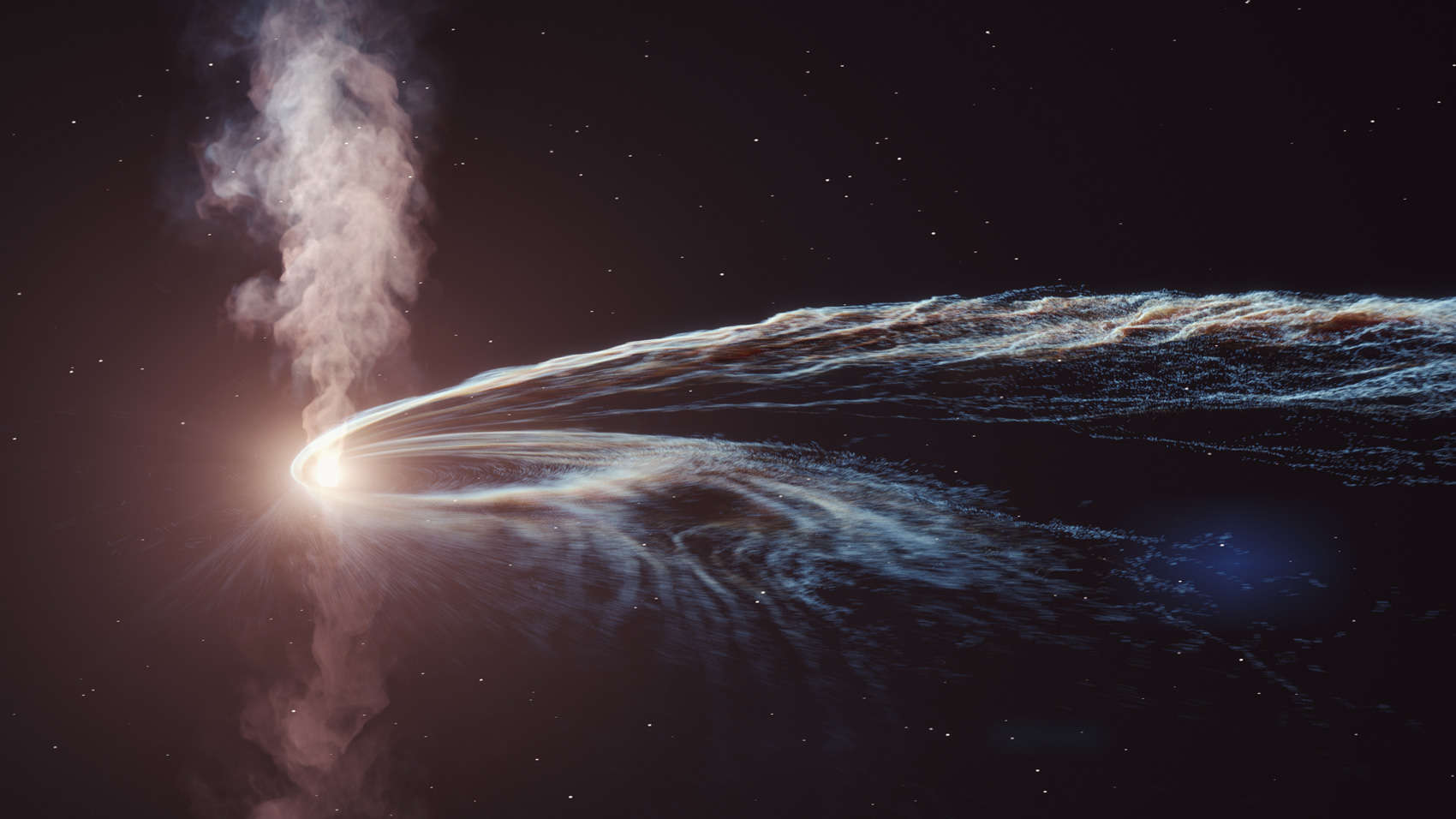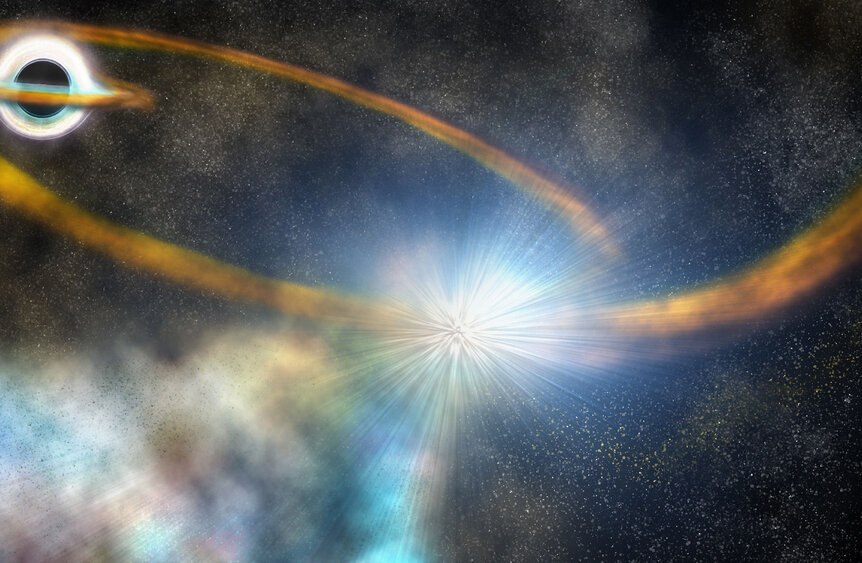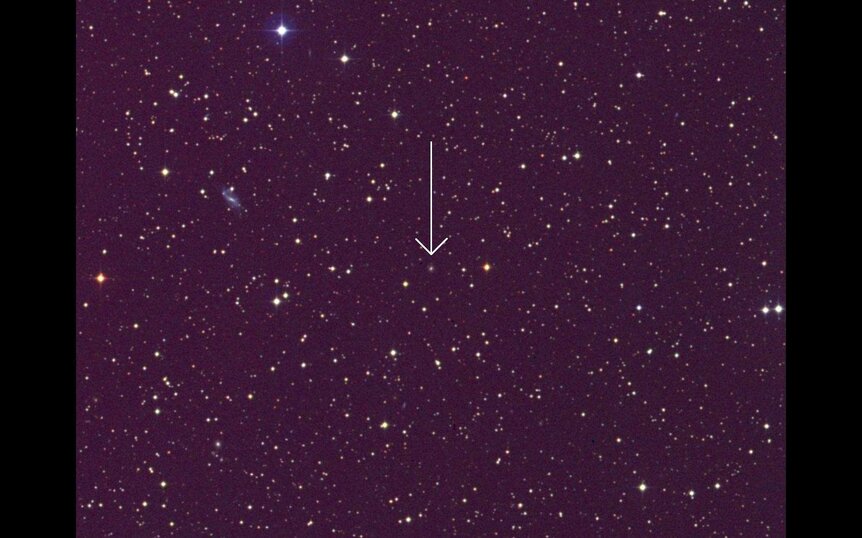Create a free profile to get unlimited access to exclusive videos, sweepstakes, and more!
A black hole tore a star apart and played with the debris

On April 9, 2019, the light from a cosmic catastrophe reached Earth: A star ripped apart by a black hole. Everything about this event is terrifying and amazing, including the colossal energy emitted, the stream of debris from the star circling the black hole, and how the spin of the black hole may be flinging that debris off like batter from a kitchen mixer blade.
The event caught the attention of two different sky survey observatories (ZTF and ATLAS) just days apart, and was at first thought to be a supernova, an exploding star. Follow-up observations showed that AT2019dsg, as it was designated, was no ordinary exploding star. Instead, it was the death scream of a star being torn apart by a black hole.
Soon multiple observatories on and above the world were peering at it, measuring its light and taking the measure of this event. Its position on the sky corresponded to a somewhat ordinary galaxy about 730 million light years from Earth. But, like all decent-sized galaxies, this one has a supermassive black hole in its center. The exact mass of the black hole isn't well constrained, but is 5 to perhaps 30 million times the mass of the Sun. This actually puts it on the small end of such beasts; many are billions of times the mass of the Sun.
Still, it's not something you want to toy with. But a star in that galaxy frakked around and found out.
The destructive power of such black holes lies not so much in their strong gravity as it is in the change of that gravity with distance. A large object approaching such a black hole feels a huge attraction to it, of course, but the part of the object closest to the black hole can feel a force immensely stronger than the other side of the object. This pulls on the object, stretching it, and when it comes to a black hole like this and a star, it can quite literally pull the star apart.
The change in force over distance is called the tides, so we call this stellar cataclysm a tidal disruption event (or TDE), a term with the highest “holy crap” to mundane name ratio in astronomy.
Spaghettifying a star has some frightening consequences, as you might imagine. As much as half the star gets torn off and stretched out into a long, thin stream of matter that orbits the black hole. Some of it falls into a disk just above the Point of No Return, which is heated to infernally high temperatures, hot enough to emit X-rays. Matter in the stream can slam into this disk (or even itself as it circles around), creating tremendous flares of energy. Overall, the amount of energy emitted by this event is just brain-frying: At its peak it was emitting as much as 80 million times the amount of energy the Sun emits.
I may have mentioned this before, but: holy crap.
The observations showed some interesting things. For one, the X-rays faded after just about 100 days, consistent with that disk of material circling the black hole cooling. We see disks like that around some black holes, called an accretion disk, heated by internal friction and fed by gas and dust falling in from the galaxy. But this one didn't last long since it came from a singular event, so we call it a transient accretion disk.
Material from the star blasted outward as well in an outflow. It's not clear what the exact geometry of this was, but it may have been blowing as a conical wind from the black hole and accretion disk. However, six months after the event, a single neutrino was detected coming from very close to the same spot in the sky as this TDE. The energy of the neutrino was ridiculously high, indicating it came from some amazingly energetic event.
The astronomers suspect these came from protons moving at just under the speed of light, hugely accelerated by intense magnetic fields close to the black hole, which slam into other subatomic particles to create neutrinos. In this case, one of these neutrinos happened to be aimed at Earth. That's fortuitous, as it allowed astronomers to learn more about what happens in the inferno around a black hole as it eats a star.
Not only that, but spectra taken of AT2019dsg showed absorption lines, features that mean some gas was between us and hotter material, absorbing the light emitted by the stuff behind it. All of this stuff is astonishing, but this part made the hairs on the back of my neck stand up: Streams of matter from the destroyed star fall around the black hole at some angle, and the spin of the black hole takes that stuff and flings it off at a different angle. It does this by literally dragging the fabric of spacetime around it as it spins, like beaters in a mixer stirring batter. This is called frame dragging, and is so strong it could change the trajectory of the septillions of tons of searing-hot star stuff falling around the black hole. The streams crossed*, and that's how we could see the absorption features: One leg of the stream was shadowing another.
Everything about this is so cool, and also soul-paralyzingly destructive. Wow.
Although the first was only found recently (in 1990, after they had been predicted for decades), over a dozen TDEs have now been seen, scattered across the Universe. Given that the event takes many months to play out, the light from several probably reach us in a given year.
The problem is finding them. The sky is big and these events are dimmed by their great distance from us. But we have surveys scanning the skies all the time now, and powerful telescopes to follow up when something untoward is seen. In the coming years we'll find many more, and learn a great deal more about them.
*This is not a recommended practice, as per Venkman et al. 1984.
















